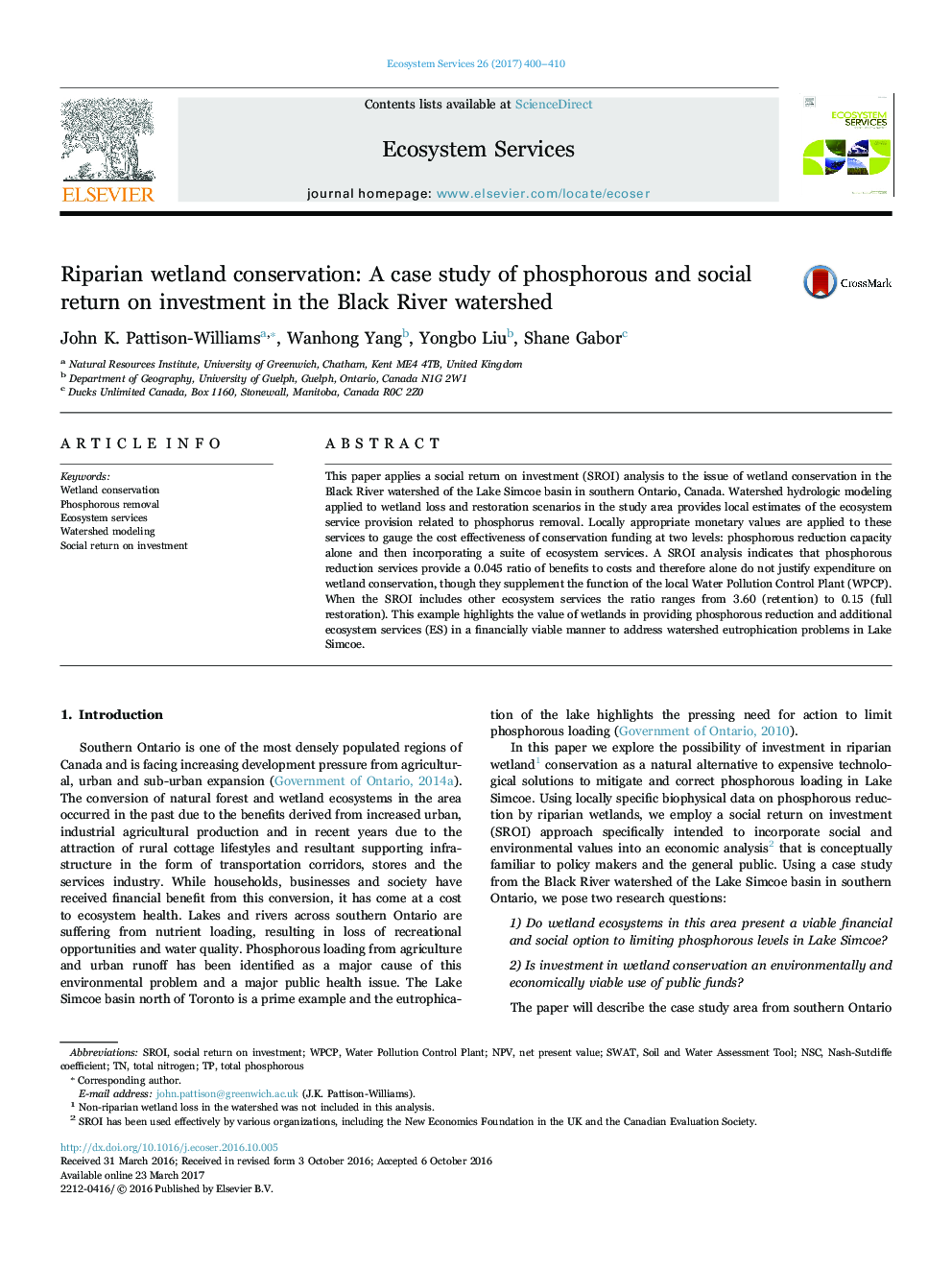| Article ID | Journal | Published Year | Pages | File Type |
|---|---|---|---|---|
| 6463562 | Ecosystem Services | 2017 | 11 Pages |
â¢Losing 25 per cent of wetlands will negate the annual phosphorous removal services of the local WPCP.â¢Phosphorous removal provides a 0.045 return; when other services are considered, the SROI ranges from 3.6 to 0.15.â¢Retention provides the highest SROI at 3.6, as high restoration costs prohibit large-scale restoration.â¢SROI is a useful approach to compare the benefits and costs of wetland ES to inform sustainable land-use policy decisions.
This paper applies a social return on investment (SROI) analysis to the issue of wetland conservation in the Black River watershed of the Lake Simcoe basin in southern Ontario, Canada. Watershed hydrologic modeling applied to wetland loss and restoration scenarios in the study area provides local estimates of the ecosystem service provision related to phosphorus removal. Locally appropriate monetary values are applied to these services to gauge the cost effectiveness of conservation funding at two levels: phosphorous reduction capacity alone and then incorporating a suite of ecosystem services. A SROI analysis indicates that phosphorous reduction services provide a 0.045 ratio of benefits to costs and therefore alone do not justify expenditure on wetland conservation, though they supplement the function of the local Water Pollution Control Plant (WPCP). When the SROI includes other ecosystem services the ratio ranges from 3.60 (retention) to 0.15 (full restoration). This example highlights the value of wetlands in providing phosphorous reduction and additional ecosystem services (ES) in a financially viable manner to address watershed eutrophication problems in Lake Simcoe.
